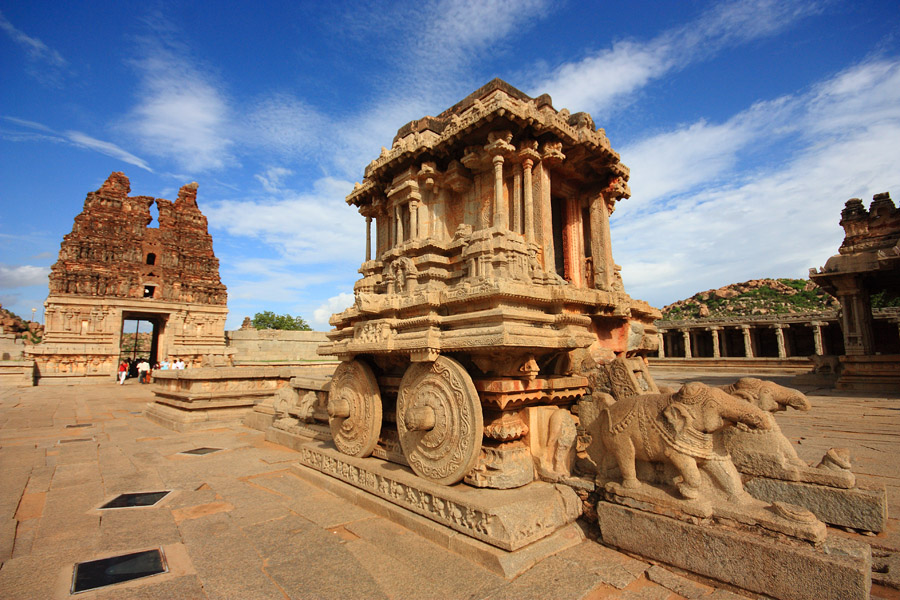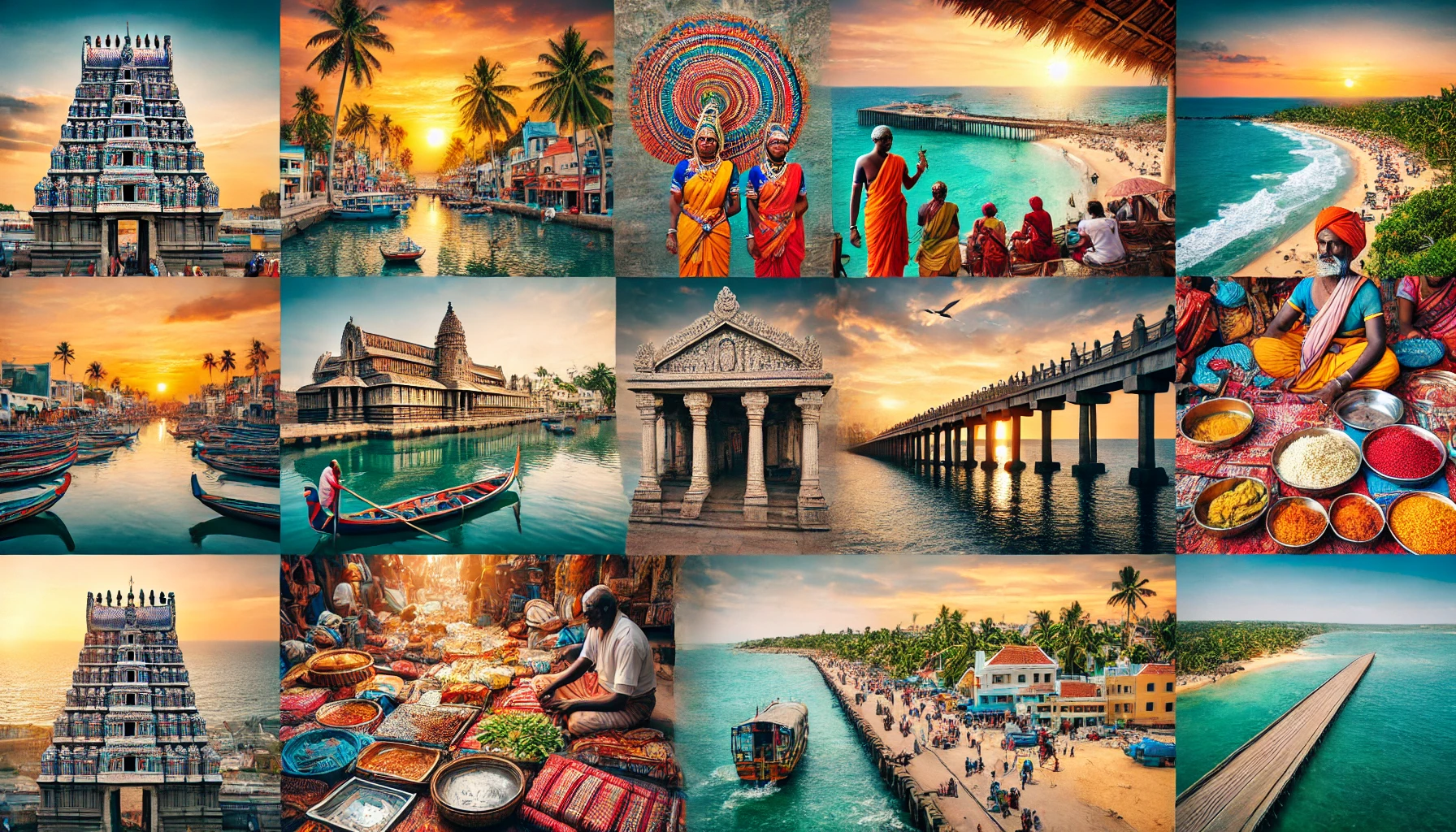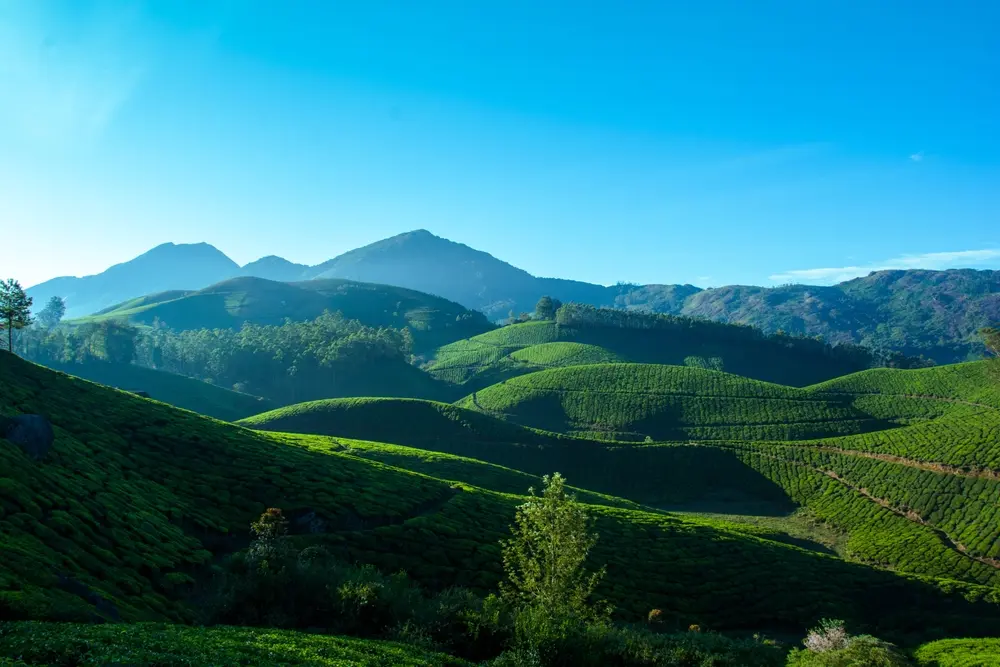The Vijayanagara Empire was founded in 1336 by Harihara I and Bukka Raya I, two brothers from the region of Karnataka. They were instrumental in establishing the empire after the decline of the Delhi Sultanate in South India. The brothers, originally serving as military commanders under the Sultanate, rallied local forces and laid the foundation for what would become one of India’s most powerful empires.
Their strategic location along the Tungabhadra River allowed them to flourish as a key trade hub between the south and the north.
The Glory of Hampi: Capital of the Empire
Hampi, the capital of the Vijayanagara Empire, was one of the most magnificent cities of its time. Nestled in the rugged terrain of present-day Karnataka, Hampi was not just a capital but a thriving metropolis with grand palaces, temples, markets, and an intricate water system. The city’s layout was designed with precision, reflecting advanced urban planning. It was a center of culture, commerce, and religion, where pilgrims, traders, and scholars converged from across India and beyond.

The architectural splendor of Hampi remains one of the most iconic features of the Vijayanagara Empire. The Virupaksha Temple, dedicated to Lord Shiva, is one of the oldest and most revered temples in India. The temple complex, with its towering gopurams (entrance towers) and intricately carved pillars, showcases the empire’s devotion to religious and artistic expression. Nearby, the Vittala Temple stands out with its famous stone chariot, a remarkable example of Vijayanagara architecture and design. These structures highlight the empire’s commitment to grandeur and artistic excellence.
The city was also home to royal palaces that stood as symbols of the empire’s opulence. The Zenana Enclosure, where the royal family resided, featured stunning architecture and lush gardens. The remains of the Mahanavami Dibba, a large platform used by the kings during important festivals, demonstrate the scale of royal ceremonies. The ruins of these monumental structures continue to awe visitors, offering a glimpse into the lavish lifestyle of the rulers and the grandeur of the capital.
Cultural Flourishing Under Vijayanagara Rule
The Vijayanagara Empire was not just a military and political force but also a major cultural center. The empire’s rulers patronized the arts, literature, and sciences, leading to a renaissance of sorts in South India. The court of Krishnadevaraya was home to some of the greatest poets and scholars of the time, including the famous Ashtadiggajas (Eight Pillars of Wisdom), a group of brilliant minds who contributed to the development of Telugu literature.

One of the most important cultural contributions of the Vijayanagara Empire was the Kannada and Telugu literature that flourished during this period. The rulers themselves were great patrons of these languages, and works in both were encouraged. The reign of Krishnadevaraya saw the creation of masterpieces like the Amuktamalyada, a Telugu poem written by the king himself, which remains a classic of Indian literature. The empire also encouraged the translation of classical texts into regional languages, making knowledge more accessible to the masses.
Additionally, the visual arts flourished during the empire’s height. Temples built during this period, such as the Hampi monuments, were not only places of worship but also repositories of art and sculpture. The intricate carvings on temple walls, sculptures of gods and goddesses, and decorative pillars reflected the empire’s sophisticated artistic tastes. The fusion of Dravidian, Islamic, and Persian styles created a unique architectural and artistic language that continues to inspire.
The Military Prowess of the Vijayanagara Empire
The military strength of the Vijayanagara Empire was one of the key reasons behind its success and expansion. The empire boasted a formidable army, which included infantry, cavalry, and war elephants. The military was well-organized, with highly trained soldiers and advanced weaponry. The empire’s strategic location allowed it to defend its borders effectively against external threats, while also expanding into surrounding territories.

Under the leadership of Krishnadevaraya, the Vijayanagara military achieved significant victories, particularly against the Deccan Sultanates. One of the most famous battles was the Battle of Talikota (1565), where the Vijayanagara forces, despite their initial successes, faced a crushing defeat. However, even after this defeat, the empire’s military prowess left a lasting legacy in the region, with techniques, fortifications, and tactics continuing to influence the local states in the post-Vijayanagara period.
The empire’s fortifications, particularly those at Hampi, are another testament to its military expertise. The city was encircled by massive stone walls and protected by natural features such as rivers and boulders. Forts like Anegondi and Chandragutti showcase the sophistication of Vijayanagara’s defensive strategies. These military innovations were integral in securing the empire’s dominance in the region for centuries.
The Decline and Legacy of the Vijayanagara Empire
The Vijayanagara Empire, despite its incredible rise and achievements, eventually fell due to internal strife, external invasions, and military defeat. The decisive blow came in 1565 with the Battle of Talikota, where the combined forces of the Deccan Sultanates defeated the Vijayanagara army. The loss led to the destruction of Hampi, marking the end of the empire’s glory. However, the decline of the empire did not erase its legacy; instead, it left an indelible mark on South Indian history.

Even after the fall of Vijayanagara, many of its traditions, architectural styles, and cultural practices continued to influence the region. Successor states, such as the Marathas, Mysore, and the Nizams of Hyderabad, drew from the administrative and military systems established by the Vijayanagara rulers. The arts, literature, and architecture of the Vijayanagara period also continued to be celebrated, influencing subsequent generations.
Today, the ruins of Hampi stand as a tribute to the empire’s grandeur. The Vijayanagara legacy is still visible in the temples, markets, and monuments that remain scattered across the landscape. These remnants of the empire are a reminder of a time when the region was a center of power, culture, and wealth, and they continue to attract visitors, scholars, and historians from around the world who come to marvel at the empire’s timeless glory.




